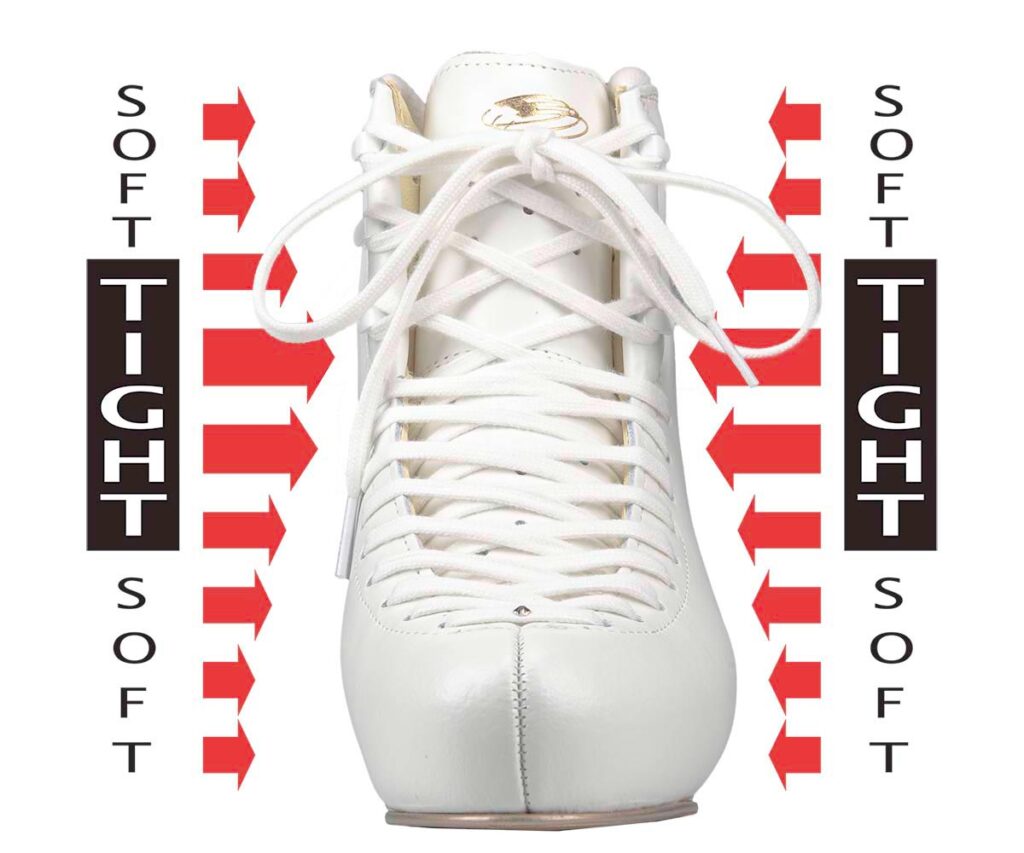Lacing is not just important, it is fundamental to your success!
- It improves control by holding your foot in the correct position
- It increases comfort by minimizing internal movement
- It increases movement range by combining with the tongue
- It increases durability by working with the shell to provide support
Lacing is done into two parts, first across the instep and then around the hooks.

HOW TIGHT SHOULD I LACE MY BOOTS?
Lacing should keep the heel in its pocket, minimizing movement. To do this, it is important to lace the last eyelets and the first hook more tightly. This creates an “hourglass” lacing effect:
- SOFT across the top two hooks to keep movement range. You should be able to put two fingers between the tongue and the front of your leg
- TIGHT across the top three eyelets and first hook
- SOFT across the toes to allow for the minimal movement required
Once laced, check the tension by passing a finger across the lacing intersections. The laces should not move.
UNLACING THE BOOT
Lacing holds the foot in place with tension, this needs to be released off the ice. Your boots need to relax, too!
- unlace completely before removing feet, otherwise you risk injury and damage the boots
- leaving boots laced causes them to narrow
Not unlacing doesn’t save time, it just spends money!




